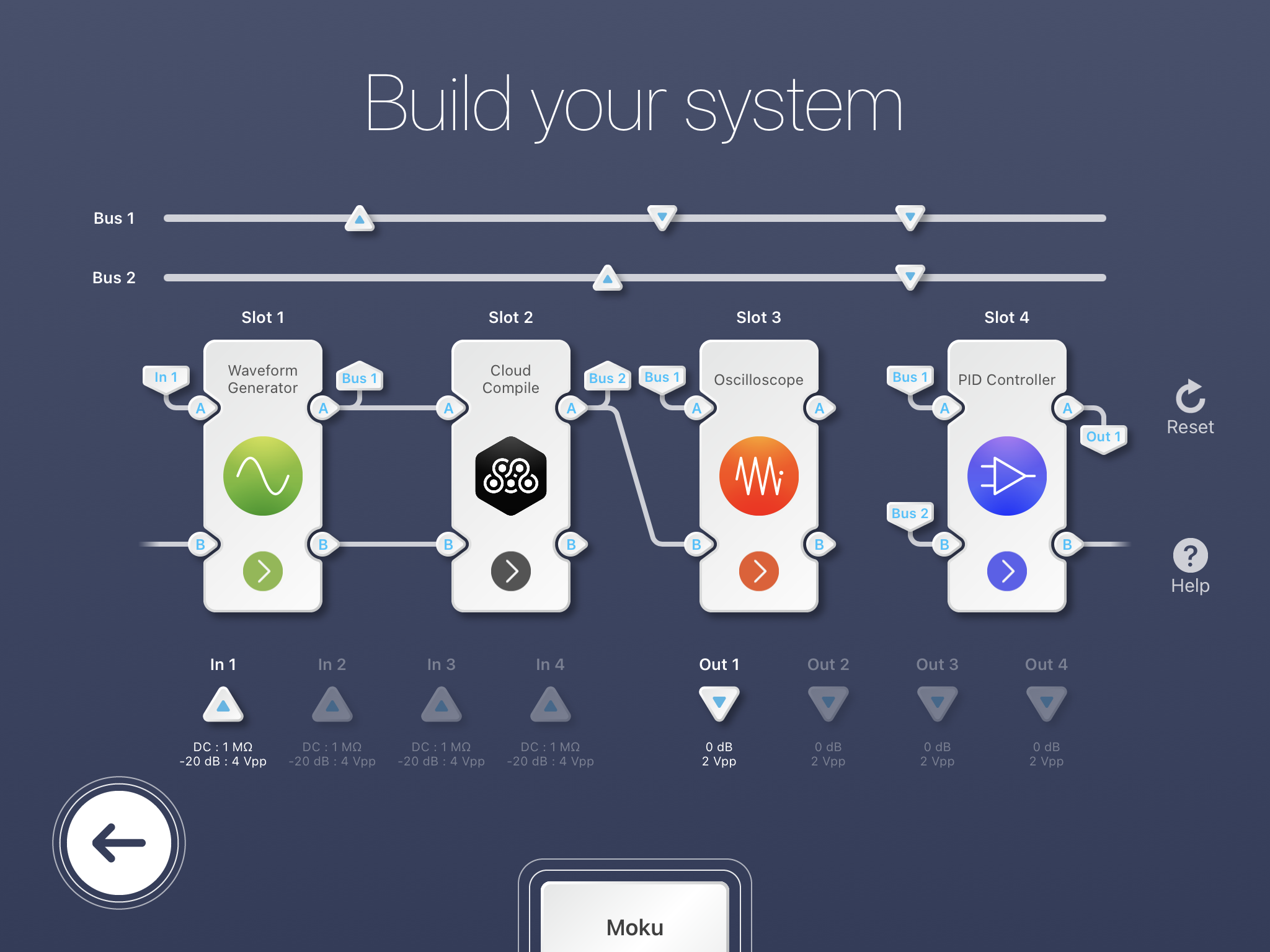# Multi-Instrument and Slots
With the introduction of Multi-Instrument mode in Moku the FPGA has been divided into isolated regions we call 'slots'. Each slot can be configured with an instrument such as an Oscilloscope or Waveform Generator which will run simultaneously and independendently. Slots can also be reconfigured to change their function without interrupting instruments running in other slots.
Each slot has several input and output ports which can be routed to or from various other locations. These sources can be the outputs of others slots or the physical ADCs of the Moku. Signals can be routed to other slots or to the DAC outputs of the Moku.
Multi-Instrument mode allows users of the Moku to build complete systems consisting of several instruments in flexible configurations to meet the signal processing requirements of their experiment. All of this is configurable using the Moku Application.

With the addition of the Moku Cloud Compiler, users can now include their own custom functionality in a multi-instrument configuration. This drastically increases the flexibility and utility of the Moku as an experimentation and system control platform.
# Slot Resources
The FPGA resources are divided between slots and the supporting logic in the platform surrounding the slots. The table below summarizes the resources availble to a custom design in each slot.
| Moku:Pro (ZU9EG) | Moku:Go (ZC7020) | Moku:Lab (ZC7020) | |
|---|---|---|---|
| 4 Slots | 2 Slots | 2 Slots | |
| Core Clock | 312.5MHz | 31.25MHz | 125MHz |
| LUT | 48400 | 20000 | 19600 |
| FF | 96800 | 40000 | 39200 |
| BRAM (36K) | 154 | 50 | 60 |
| DSP | 432 | 100 | 100 |